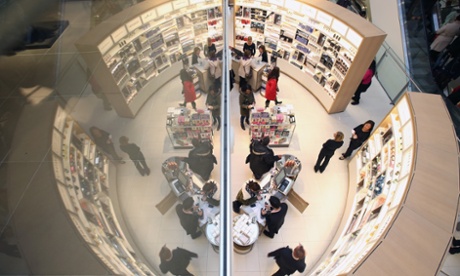
Books and records that attract the tag “sparkling” or “charming” are always at risk of being dismissed as mere entertainment; trinkets to pass the time in a pleasant way rather than weighty contributions to literature or music. Madeleine St John’s novel The Women in Black and Belle and Sebastian’s album Dear Catastrophe Waitress have both been given those labels, but it would be foolish to underestimate them. Beneath the shiny surface of each sits both an abrasive wit and insightful reflection of human nature.
The Women in Black was the first of four novels by Madeleine St John, and the only one to be set in Australia. A comedy of manners set in 1960s Sydney, it follows the lives of the women who work at the FG Goode department store (modeled on David Jones, whose attendants still wear black today). St John’s prose breezes along as though each chapter is written in a single gush of breath, occasionally pausing to drop a withering line such as the description of Fay’s husband, Frank: “He was a bastard of the standard-issue variety, neither cruel nor violent, merely insensitive and inarticulate.” Military metaphors for the pre-Christmas sales, when a “phalanx of grim-faced viragos cantered through the breach” and “lives might not be lost but wounds of one kind or another would most certainly be sustained”, are examples of the delight within the novel.
But quieter, more reflective moments are also scattered throughout, including the advice that Magda, the gatekeeper of Model Gowns, dispenses to the recent high-school graduate and sales assistant (temporary), Lisa: “People expect men to be clever. They expect girls to be stupid or at least silly, which very few girls really are, but most girls oblige them by acting like it.”
Glaswegians Belle and Sebastian struck gold with their sixth album, Dear Catastrophe Waitress, released in 2003, following a few albums of uneven quality. The toe-tappingly catchy opening track, Step into My Office, Baby, is just as witty as The Women in Black on the mundane subject of work, where a new job comes with “A chance of overtime / Say, my place at nine?” From there, the album romps through 1960s-inspired pop numbers, the pace slowing to produce more melancholy ballads such as Lord Anthony, which follows the travails of a bullied boy at school (“Just take it in the guts, it can’t get any worse”), or Piazza, New York Catcher, which retains a jauntiness in its folky chords as the singer tries to persuade a girl to elope with him. It’s on I’m a Cuckoo that the band’s sugary pop sound most obviously collides with heavier lyrics; you may catch yourself belting out lines such as “Breaking off is misery / I see a wilderness for you and me”.
Like the technique of successfully medicating dogs by coating their tablets with delicious food, The Women in Black and Dear Catastrophe Waitress have serious ideas tucked inside their easy-to-swallow packaging. Whether it’s an absent husband or a coveted dress, an abusive relationship or sleeping on a sunbeam, both possess the right combination of style and substance.

